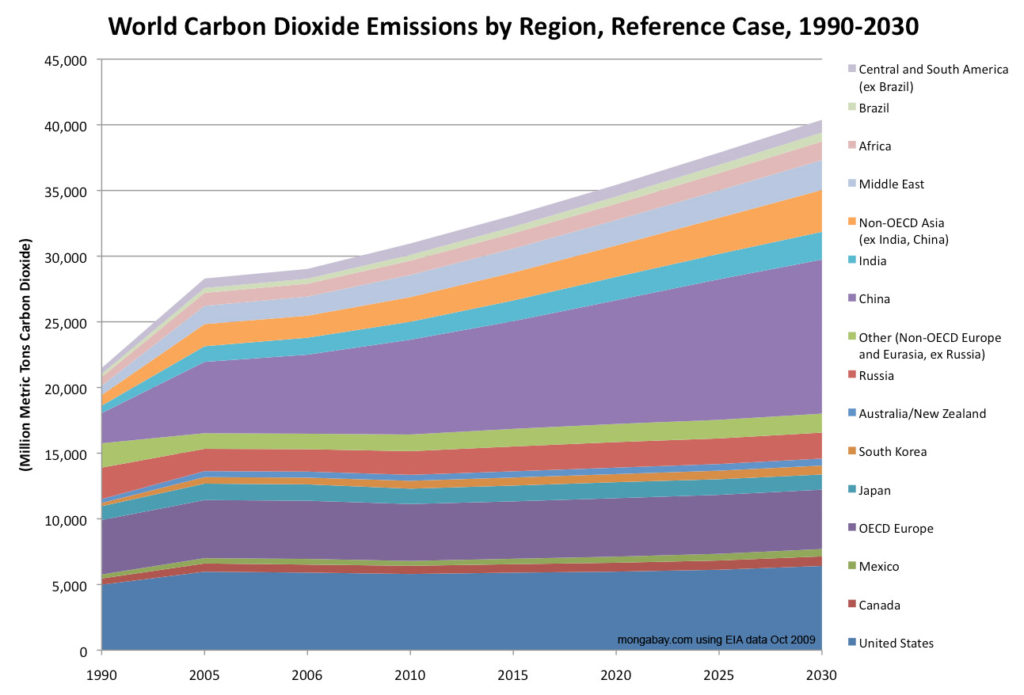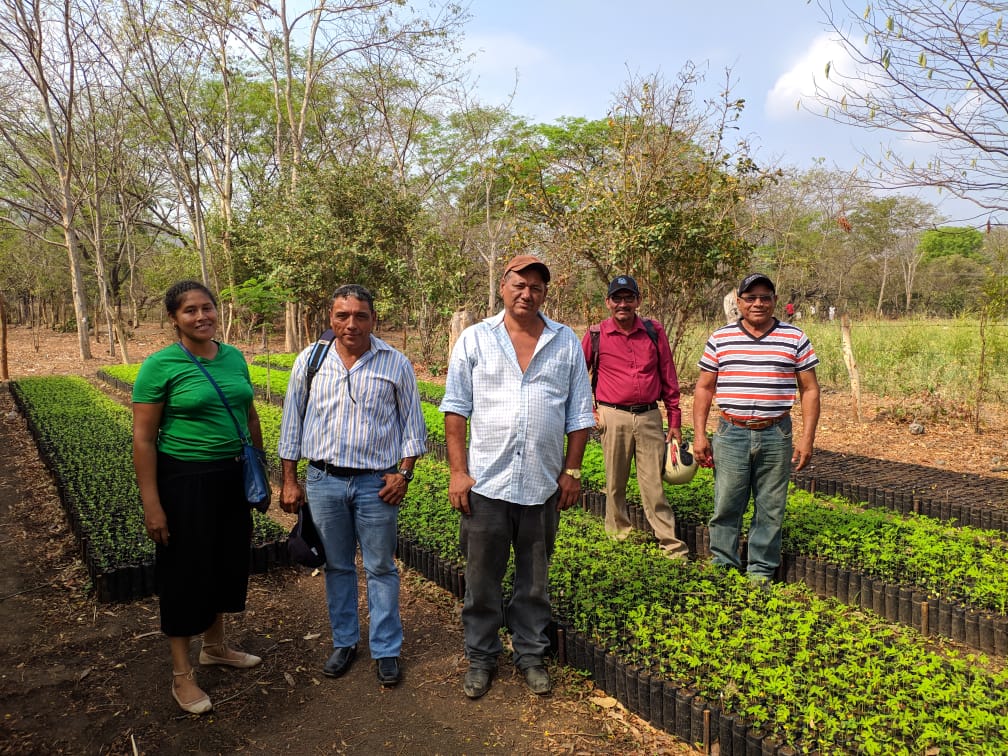First thing’s first, what is carbon pricing? Carbon pricing simply means putting a price on pollution and is based on the idea that the more expensive polluting is, the less people will do it. I feel so strongly about this as an idea that I’ve dedicated the last decade of my life to Taking Root, an organization that asks companies to voluntarily place an internal tax on their carbon emissions (a form of carbon pricing) and uses that money to pay farmers to remove the same amount of carbon from the air by growing trees (known as a carbon credit).
There are a number of common arguments against carbon pricing. One came up in the podcast, that carbon credits are like a get out of jail pass that allows polluters to keep on polluting without actually fixing the root causes of climate change. This type of argument is frustrating to me because it feels like it pits environmentalists against each other instead of working together towards actually trying to fix the problem of reducing the amount of greenhouse gases in the atmosphere. In the heat of the argument I was about to blurt out:
“Every country that has successfully reduced its carbon footprint has done so through carbon pricing. It’s the only policy option that we know works!”
I felt like that was a very powerful argument that would really drive my point home. A younger version of myself would have blurted that argument out loud. Thankfully I didn’t. In a world where fact and opinion are increasingly blurred, I wanted to see if my opinion was actually grounded in reality or just a false logic that I had constructed in my head. Climate change is the most pressing issue of our generation, so it is crazy to me that we don’t seem to know the answer to the simple question of what approaches work best to reduce global emissions. As a result, I did some research, and this is what I found.
It’s complicated…
The answer is 42. If this answer is incomprehensible, it’s because the question is not nearly as simple as I expected. To claim that a country successfully reduced its carbon footprint through carbon pricing, you first need to know the time period that those reductions took place and whether that was because of carbon pricing or some other totally unrelated factor.
The first place I looked was what is known as “Kyoto Protocol’s first commitment period”. From 2009 to 2012, a number of countries committed to reducing their emissions relative to their 1990 levels. Every country had a different target and some succeeded while some failed. All I would have to do was look at the ones that succeeded and what were the main policies that worked.

Global CO2 emissions by country. Graph credit: Mongabay
The problem is that the results were not clean cut. Some countries used carbon pricing (e.g. carbon taxes or cap and trade) and greatly surpassed their emission reduction targets like Germany and Sweden. Other countries didn’t use carbon pricing but greatly reduced their emissions relative to 1990 levels simply because that’s when the Soviet Union collapsed along with their economies . In this case, emission reductions were not because of intentional policies but rather because of failed economies.
In addition, major structural changes were also taking place in the global economy over that same time period that changed where emissions took place. While Europe’s emissions as a whole declined, those of China, which wasn’t part of Kyoto, rose. This is in part because manufacturing, which is very polluting, moved from Europe to countries such as China. It’s not that overall pollution declined; it was just relocated somewhere else.
Part of the climate puzzle…
To get a meaningful answer, I needed to dig deeper and I found that carbon pricing was generally an important part of successful emission reduction strategies but not sufficient on its own. You can’t just make polluting activities that people depend on in their everyday life really expensive without also providing an easy alternative. For example, if people need to drive to get to work, a moderate carbon price on gasoline is unlikely to make people drive less unless an easy alternative to gasoline powered cars is available. Without the alternative, people are likely to get angry, not drive less. However, if the tax is combined with subsidies for something like electric cars such that it becomes cheaper to drive, the policy is likely to be effective. It’s a bit like if you are trying to prevent a town from flooding, you cannot just block a river without creating an alternative path for the water to flow. Otherwise, the water will just overflow and the town will flood anyway.
Sweden and Germany are great examples of this. They both put high prices on carbon, which discouraged people from polluting, but they also implemented strong policies to develop alternatives. Germany, for example, massively subsidized renewable energy projects to provide a clean alternative to their coal. Sweden, a cold country with lots of emissions related to heating, used a large carbon tax but also subsidized and promoted heat pumps, a much cleaner and efficient way of heating.
Using the same behavioral logic to grow trees…

A training session on a nursery earlier this year with farmer at one of Taking Root’s tree nurseries
When I think of my own experience working in Nicaragua with Taking Root, the same logic applies. In Nicaragua, like most of Latin America, the largest source of CO2 emissions comes from deforestation and unsustainable farming practices in attempts to improve productivity. To address this problem, we cannot just discourage deforestation. We also have to provide a better alternative, and money alone cannot solve this. This is why we work with farmers to develop new ways of farming that integrate new trees on their farms in a way that actually improves farm productivity. We use financial incentives to help fund this transition but we also teach farmers new ways of doing things. As such, a large part of our work focuses on education, training and showing farmers successful examples of how trees support overall farm productivity.
In summary, carbon pricing is a useful tool in the fight against climate change because it discourages pollution. But it only really becomes a powerful tool when combined with other policies that provide alternative ways of doing things. When well designed, carbon credits can do just that through both a carrot and stick approach. The cost of buying a carbon credit acts as a stick (i.e. a deterrent) to polluters that encourages people to innovate and find cleaner ways of doing things. In addition, the money from the sale of the carbon credits can be used as a carrot (i.e. a reward) to fund alternative ways of doing things like incentivizing farmers to grow trees and reforest large areas of land, one of the many essential solutions needed if we are going to successfully tackle climate change.
Author: Kahlil Baker
